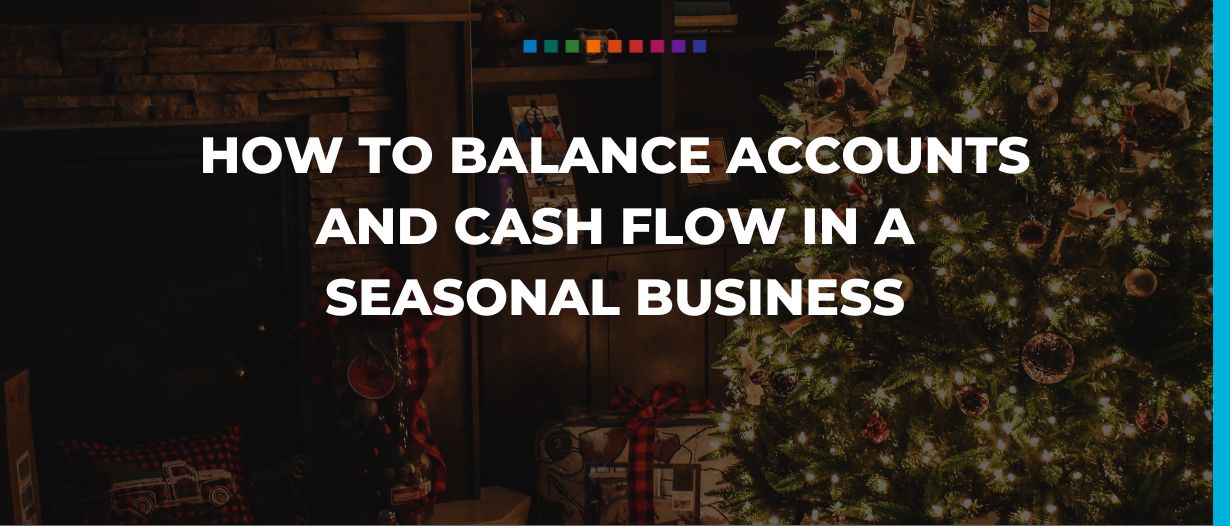Cash flow is an absolutely essential part of running a business – and smaller companies and startups can underappreciate it. There are many examples of businesses with tremendous interest in their products and plenty of upcoming work that cannot stay afloat simply because their cash flow is managed poorly.
The problem of poor cash flow is compounded if you run a business that fluctuates seasonally. In addition, companies that might fare better at certain times of the year are impacted by rising energy costs, increasing rates of inflation, and other general economic challenges that abound and threaten to dismantle financial plans.
Of course, the vast majority of industries have natural peaks and low periods, but there are some that are simply far more vulnerable than others to this issue. For example, some companies are naturally more popular during the warmer months such as air conditioning providers, and some have specific seasonal uplifts such as the travel industry, which always sees a boom period just after Christmas.
In this article, we will take a look at how seasonal businesses can find better ways to balance their cash flow and their accounts.
Diversify how you offer products
Perhaps one of the most obvious examples of a season-dependent business is that of the ice cream parlour. Guaranteed to do a roaring trade in the summer, the demand for frozen treats just isn’t quite the same in the cold winter. One of the UK’s most popular independent ice cream shops is Boho Gelato, which has four locations across the south coast.
Interestingly, Boho Gelato actually faced its toughest period during the Covid-19 pandemic – something which you might consider a low season for every business.
“It was a massive shock,” said Seb Cole, master gelato maker and owner of Boho Gelato. “It could not have happened at a worse time of year for us cash flow-wise as we had barely come out of the off-season and we had no way of supporting 15 staff without any income.”
For some companies, facing a second low period would be too much. But Boho Gelato looked into diversifying how it offered its products.
“I decided to test the water to see if I could do home deliveries so I put a post on our social media expecting to get 30 or 40 orders,” said Cole. “I got around 150. I had to manually reply to all the emails, check the bank for payments and then make and deliver all the ice cream orders myself. It has really helped our cash flow in comparison to doing nothing.”
Budget realistically
Balancing your cash flow is often about planning. Having a plan and a budget in place allows you to understand how much money you need to have in place, and when it needs to be there. Too many companies simply attempt to manage this on the fly and it weakens their ability to understand how much they can spend.
Make a forecast for the year and stick to it. Of course, it can be updated as you go, but having the forecast helps you to understand why you can’t spend more in a particular month – it will come back to bite you.
Be flexible with how you accept payment
You might be surprised just how much business your business can lose if you don’t offer a broad range of payment options. This is a huge problem for eCommerce and digital businesses that offer products and services through their website, but might not be willing to accept alternative payment methods other than credit cards.
“Customers abandoning their cart at the checkout stage is a frustratingly common experience,” says Chris Plumridge, Director at Wellden Turnbull. “Logic dictates that the way to remedy this is to simplify the page and provide all the necessary information – but this could be overlooking the fact that many customers abandon their cart simply because they don’t see an opportunity to pay the way that they want to.”
Popular alternative payment methods include PayPal, Google Pay and Apple Pay, as well as systems such as Klarna, which allow customers to buy via interest-free credit and then pay off the purchase over a number of months.
Lower overheads in the off-season
Part of the problem that seasonal businesses face is that they have the same costs in the off-season as they do in their high period. For example, if they run their business out of a large office because that is what the company requires at peak times, they still have the cost of that huge office to pay when they don’t need all of their staff.
In this scenario, the business could look into an option such as renting out the office space to another company during the low season. It could also be prudent to look into other options such as limiting your needs from service providers.
Getting your cash flow right can be the difference between a successful company making a good profit, and one that is struggling to stay afloat month after month. The problem with cash flow problems is they make it look like your business is failing even if in reality, you are having a lot of success.

























